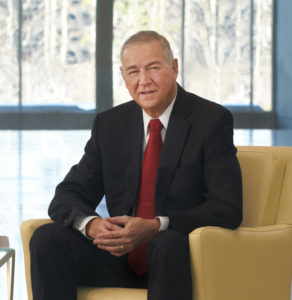Much deeper than the generous perks and benefits that characterize SAS are the uncommon philosophies, methods and intentions of its management team led by Chief Executive Officer James Goodnight.
In a world where job mobility is on the rise and flexibility and purpose are being weighed more heavily against simple compensation, the long-time CEO has found success in keeping employees happy and loyal through embodying a benevolent and people-focused organization. The unique culture at SAS has been emulated by some of the most powerful tech firms in the world and startups alike, now characteristic of companies such as search giant Alphabet Inc., Google’s parent company.
During the fall of 2008, at the start of the Great Recession, the analytics software company was challenged by losing many of its customers who were forced to cut back on spending. In early 2009, at a time when many of SAS’ rivals announced widespread layoffs, the company held a global webcast to address the fact that none of its 13,000 employees would lose their jobs. Instead, Goodnight asked workers to be cautious with spending and do their honest best to help the company get through the rough time.
“By making it very clear that no one was going to be laid off, suddenly we cut out huge amounts of chatter, concern and worry – and people got back to work,” the tech CEO told Fast Company in an interview.
Goodnight, now age 74, holds his employees in the highest regard, indicating that it is the new ideas which come from employee’s brains that make an organization work. While he anticipated the fact that the recession would chew into short-term revenues, Goodnight remained confident that while SAS’ competitors focused on trimming fat, his team would continue to stay ahead of the game by churning out new breakthrough products. In 2009, SAS recorded record profits.
SAS was one of the first to imagine offering employees perks far beyond work areas filled with snacks and drinks, such as access to a massive gymnasium filled with tennis and basketball courts, a weight room and a heated pool. The company allows all employees to visit an on-site health care clinic, access deeply discounted child care and sign up for no-cost “work-life” counseling. While the benefits may seem excessive, with the risk of weighing on the company, the investment in employee satisfaction has done nothing but propel SAS to new heights at the top of the big data industry. Instead of simply offering workers higher wages, Goodnight realized early on that benefits were a great way to boost employee loyalty and engagement, and therefore retention, by actively demonstrating how the company values its people.
Reflecting its culture of trust, SAS is extremely flexible about granting employees freedom on the hours they work and when they use any of the campus services.
“While we say we have a 35-hour workweek, I don’t know anybody who really works 35 hours,” said former CMO Jim Davis in an interview. “The reality is if you trust people, and you ask them to do something – and you treat them like a human being as opposed to a commodity where you try to squeeze something out – they’re going to work all sorts of hours. But they’re going to enjoy those hours as opposed to ‘slaving in the office’.”
When he first programmed a computer as a college junior at North Carolina State University, Goodnight understood the importance of finding fulfillment and meaning through work. “A light when on, and I fell in love with making machines do things for other people,” he said. As a result, his company goes a long way to make sure employees take ownership of their projects.
The Cary, NC-based business analytics software and services company is the largest independent vendor in the business intelligence market. Its products help customers turn data into valuable information about customers, performance, financials and more so to make more efficient and fact-based decisions that impact their bottom lines.
By staying a privately held company, multi-billion-dollar SAS has avoided the pressures brought on by short-term objectives of shareholders. Goodnight repeatedly turned down takeover offers in efforts to protect SAS' work environment. At the same time, he made sure to maintain a flat organization structure, with about 30 individuals who report to him directly and three organizational layers.
























